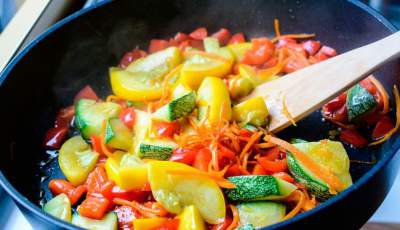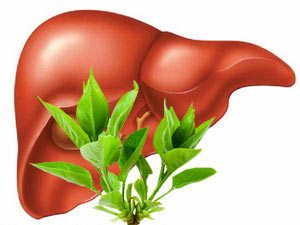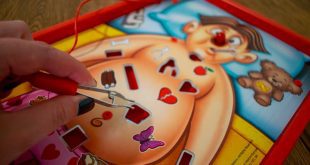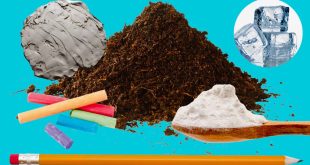 Physicians called how many vitamins are destroyed in the process of thermal treatment of products.
Physicians called how many vitamins are destroyed in the process of thermal treatment of products.
Heat treatment destroys up to 30% of its biological properties.
Heat treatment products needed to improve their taste, softening, destruction of harmful microbes and toxins. Obviously, boiled, fried, baked or stewed food is safer than raw, and uberest you from digestive disorders. But what about the vitamins which are destroyed by high temperature?
As vitamins carry the heat?
Contains vitamin A. in the liver, garlic, butter, broccoli, seaweed, carrots, tomatoes, green onions and dill. Heat treatment destroys up to 30% of its biological properties.
Especially intensively the vitamin A is destroyed when roasting, drying by ultraviolet rays. Well preserved by sterilization of products at temperatures up to 120 degrees.
Vitamin B1. Found in oatmeal, millet, pork, liver, buckwheat, pasta. Particularly sensitive to boiling (lose up to 45% of use), frying (up to 42%) and fighting (30%). Loses activity at temperatures above 120 degrees.
Vitamin B2. Found in liver, mushrooms, chicken eggs, goose. If you cook these foods, you will lose up to 43% of useful properties, therefore other methods of cooking are preferable (when fighting lost only 10% of the biological activity of vitamin).
Vitamin B6. Contains beans, tuna, mackerel, sweet pepper, chicken meat, spinach, cabbage. This vitamin is really resistant to high temperature and even preserves these products is useful because so B6 frees its active ingredients.
Heat treatment and vitamins
Vitamin B9. Found in liver, beans, spinach, broccoli, barley grits, white mushrooms and champignons. Not tolerate any thermal treatment, losing up to 90% of their properties. Especially significant losses of this vitamin during cooking and preservation.
Vitamin C. Contains rose hips, sweet pepper, cabbage, oranges, lemons, garlic, spinach. No wonder these products are most often eaten fresh: otvarivaya cabbage, we lose up to 90% of vitamin, and the fighting destroys it by 50%. Each subsequent thermal processing of ready meals by 30% reduces the content of vitamin C.
The vitamin d Contained in haddock, liver, chicken eggs, butter. Tolerates heat treatment if the temperature does not exceed 100 degrees. Destroyed largely due to exposure to oxygen, therefore, can easily withstand sterilization products.
Contains vitamin E. in rose, salmon, walleye, wheat, dried apricots, prunes, oatmeal and barley cereal. Virtually not susceptible to high temperatures, but suffers from direct sunlight.
Vitamin PP. Contained in poultry meat, rabbit, beef, fish and liver. Is perfectly resistant to any thermal processing, canning and freezing. These products will lose from 5 to 40% of useful properties vitamin, as if they were not prepared.
How to save useful properties of the products?
Not to lose in the cooking process all the vitamins, control the temperature: it should not exceed 100 degrees. It will destroy pathogens but retain the biological properties of the products.
It should be possible to reduce the time of heat treatment. The vegetables cook for a couple or bake. Don’t chop them too finely, don’t use a grater or blender – optimal if products are to peel and slice just before serving.
Each subsequent warm-up meals reduces its benefit. Try to cook one meal, do not freeze the products and not store them too long.








